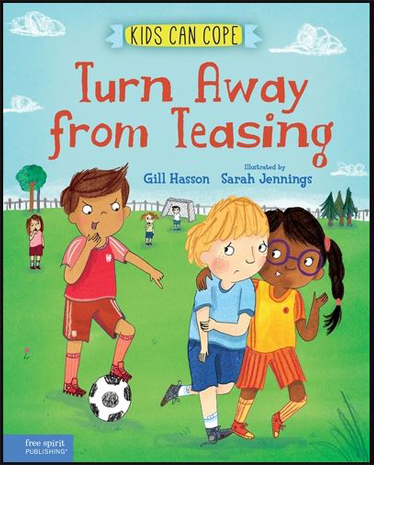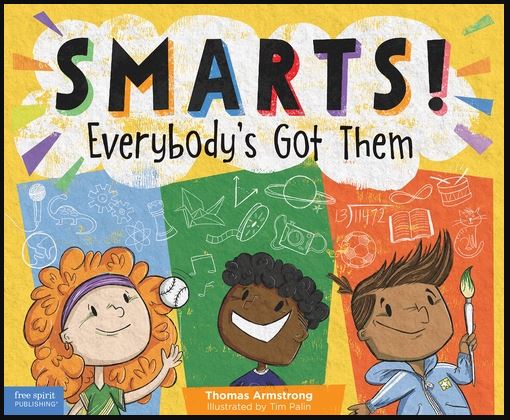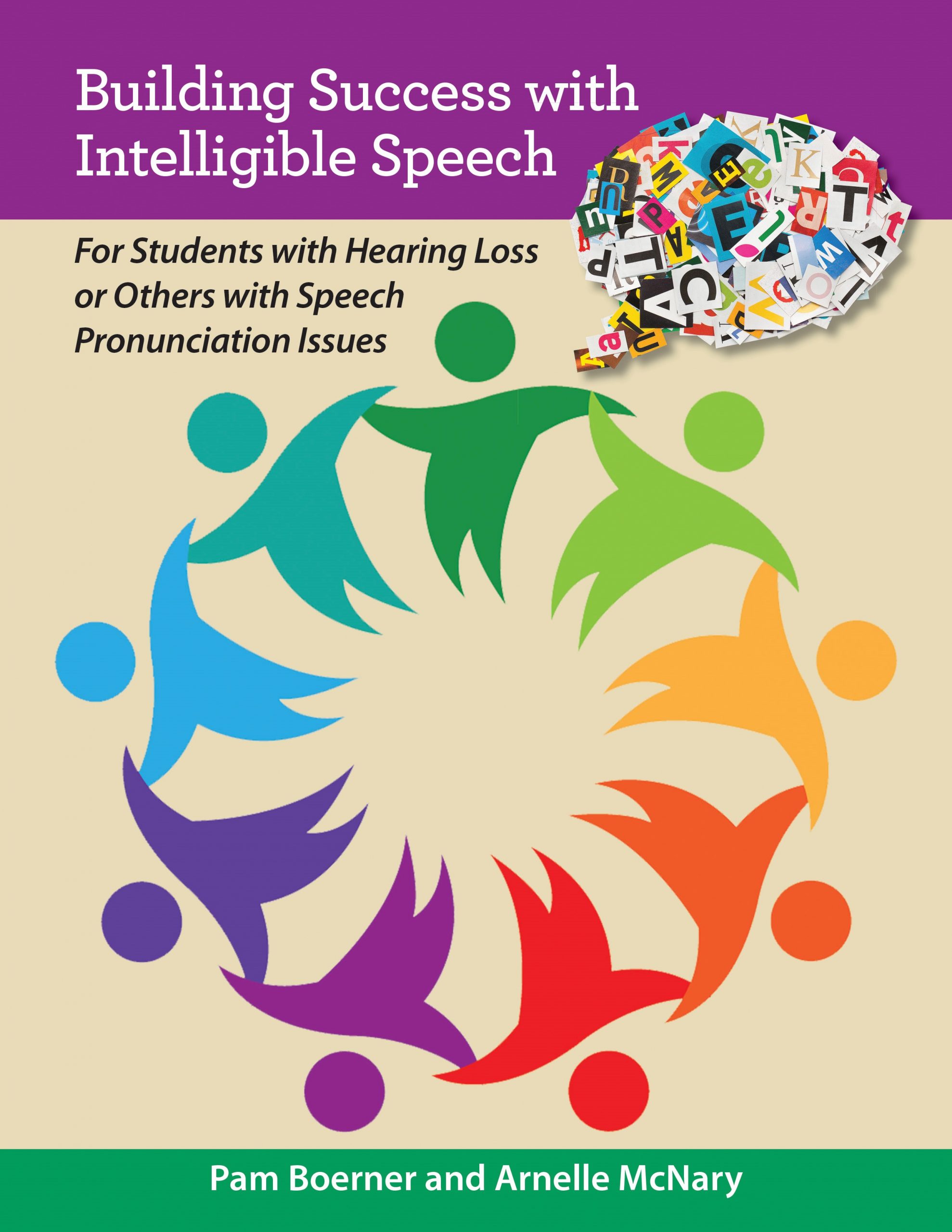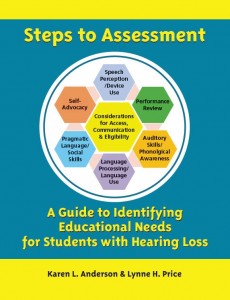Related Products
For Parents
Related Teacher Tools Takeout Items
Learning Progress Equal to Peers?
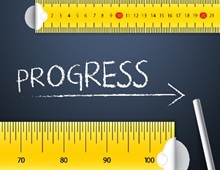 Students with hearing loss have less access to communication. This will result in a slower pace of learning and fewer gains in academic knowledge unless appropriate services and supports are provided. At the end of the school year it is important to ask whether your students have learned the amount expected of their grade level. Has the level of support been sufficient? We need to use data in our planning for next year’s success!
Students with hearing loss have less access to communication. This will result in a slower pace of learning and fewer gains in academic knowledge unless appropriate services and supports are provided. At the end of the school year it is important to ask whether your students have learned the amount expected of their grade level. Has the level of support been sufficient? We need to use data in our planning for next year’s success!
Decreased speech perception translates into decreased comprehension, especially of novel words and new information. Most students who are deaf and visual communicators primarily receive communication from their classroom interpreter with little meaningful conversation or information exchange directly with peers. Regardless of the communication modality, progress through the curriculum at the same rate as class peers assumes that the student is fully participating and has received the same information as those peers. It’s all about access!
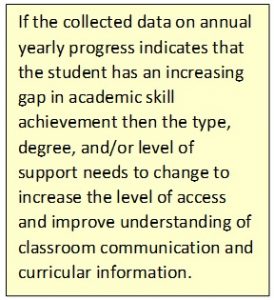 The law requires the IEP be reviewed at least once a year to determine if the child is achieving the annual goals (Section 1414(d)(4)(A)). The IEP team must revise the IEP to address any lack of expected progress and anticipated needs.
The law requires the IEP be reviewed at least once a year to determine if the child is achieving the annual goals (Section 1414(d)(4)(A)). The IEP team must revise the IEP to address any lack of expected progress and anticipated needs.
We need to not only strive to close language and learning gaps, we need to simultaneously support our students in keeping up with the day-to-day learning in the classroom. We MUST monitor progress to know if full access is truly occurring and to ensure that our students are keeping pace with classroom expectations. Without appropriate support, the trajectory of educational performance shown above is all too likely.
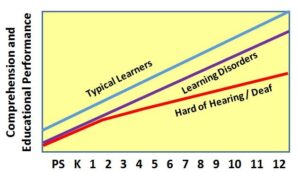 Students who are deaf or hard of hearing with no other learning issues – with full access to school communication – CAN progress at the expected rate IF they are receiving the appropriate intensity of focused support.
Students who are deaf or hard of hearing with no other learning issues – with full access to school communication – CAN progress at the expected rate IF they are receiving the appropriate intensity of focused support.
Compare Progress from Year-to-Year
Review your student files semi-annually for young children and annually for later elementary school-age students. If available, look at norm-referenced test results, like the high-stakes tests or language evaluations. Have the student’s percentile scores or standard scores stayed consistent? With your focused intervention and appropriate supports, have the student’s percentile scores improved? Or, like the previous figure depicts, has the student experienced inappropriate access and insufficient supports causing a decrease in performance over time?
For example, consider a student who scored in overall reading in
- grade 2 at the 48thpercentile
- grade 3 at the 38th percentile
- grade 5 at the 30th percentile
The student still continues to fall within 1 standard deviation from the mean, or within the ‘average’ range. However, a drop of 18 percentile points over 3 years raises the question about adequate yearly progress and if the access accommodations and intensity of services have truly ‘leveled the playing field’ for the student with hearing loss. The school team may not be concerned because the student still scores ‘average’ but to a professional with a background in the impact of hearing loss on learning, this trend should demand that more focused and appropriate supports/access accommodations be provided.
Needed Supports for Keeping Pace in the Classroom
Background, or world knowledge is necessary to build surface level understanding of a specific topic. Prior knowledge is an excellent predictor of performance. Our students tend to have ‘Swiss cheese language’ with unpredictable knowledge gaps in vocabulary and concepts. They also are often limited in the number of attributes they use to describe objects or concepts, further contributing to their gaps and limited world knowledge. Imagine learning about the conquistadors if you lacked knowledge of geography, discoveries of early explorers, and that there are different countries and they may desire different things. Previewing and reviewing new vocabulary is critical for the student to ‘keep up.’
Filling the gaps. We can expect that surface learning will take longer for students with hearing loss than their typically hearing peers. Students who have a less complete understanding of surface level information are not going to benefit to the same degree, or at the same rate, during interactive activities 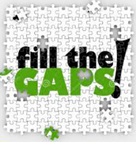 meant to move them to deeper understanding. “Closing the language gaps” is not just something that is a nice extra touch to provide to our students if there is a teacher of the deaf available; it is necessary for deeper learning. Add to this the fact that reduced listening ability often delays literacy skill development and slows reading fluency. Just teaching vocabulary, without sufficient phonological awareness, will not develop the reading fluency the students need for comprehension at the pace of peers. Filling in the gaps in prior knowledge is necessary if a child is to be able to develop the surface learning that is prerequisite to developing deeper understanding. Without this surface learning, a deeper understanding is not possible.
meant to move them to deeper understanding. “Closing the language gaps” is not just something that is a nice extra touch to provide to our students if there is a teacher of the deaf available; it is necessary for deeper learning. Add to this the fact that reduced listening ability often delays literacy skill development and slows reading fluency. Just teaching vocabulary, without sufficient phonological awareness, will not develop the reading fluency the students need for comprehension at the pace of peers. Filling in the gaps in prior knowledge is necessary if a child is to be able to develop the surface learning that is prerequisite to developing deeper understanding. Without this surface learning, a deeper understanding is not possible.
Conversational inequalities. Research4 has indicated that during one-on-one conversations in a quiet setting, students who are hard of hearing have conversational skills equivalent to their hearing peers. In a typical mainstream classroom, students with hearing loss make fewer overall communication attempts than their hearing peers. They also often seem unaware when their peers try to initiate conversation and do not attempt to maintain the conversation. When they attempt to maintain the conversation, they generally use one-to two-word phrases and do not add new information. The research found that in a 1:1 conversation, 75% of the conversation maintenance attempts by children with hearing loss were appropriate compared to 100% for hearing peers. They frequently tried to maintain the conversation by bringing up a topic that was unrelated to the conversation. In other words, they were not aware enough of the content of the conversation to contribute information, so they brought up a new topic.
 Educational practices that seek to move students to deeper understanding typically involve interaction with peers. This is often very challenging for students with hearing loss when acoustic access inequality in the classroom results in conversational misunderstandings for students with hearing loss. This provides a powerful argument for the use of hearing assistance technology (HAT) that will improve perception of peer voices in 1:1 or group settings.
Educational practices that seek to move students to deeper understanding typically involve interaction with peers. This is often very challenging for students with hearing loss when acoustic access inequality in the classroom results in conversational misunderstandings for students with hearing loss. This provides a powerful argument for the use of hearing assistance technology (HAT) that will improve perception of peer voices in 1:1 or group settings.
Challenges repairing breakdowns. Another aspect of conversation relates to  what a person does when they do not fully understand. One study5 found that persons with hearing loss were able to cue into changes in topic but had much more difficulty when a shift in topic was made during the conversation. The research findings can be summarized as, “the more predictable the conversation, the fewer the likely breakdowns.” The teacher needs to be aware of this issue when pairing the student with different partners or groups. Moving to a quieter area for discussion will not ensure full participation by the student with hearing loss but it will make participation easier and more likely. Including him or her in a group that is more likely to stick to the topic will heighten the value of the exercise for the learner with hearing loss.
what a person does when they do not fully understand. One study5 found that persons with hearing loss were able to cue into changes in topic but had much more difficulty when a shift in topic was made during the conversation. The research findings can be summarized as, “the more predictable the conversation, the fewer the likely breakdowns.” The teacher needs to be aware of this issue when pairing the student with different partners or groups. Moving to a quieter area for discussion will not ensure full participation by the student with hearing loss but it will make participation easier and more likely. Including him or her in a group that is more likely to stick to the topic will heighten the value of the exercise for the learner with hearing loss.
Keeping up in the classroom is a challenge for children with hearing loss due to access issues that interfere with understanding conversational communication and the gaps in knowledge resulting from decreased auditory access since infancy (or sign communication with limited language models since infancy). Filling the gaps of vocabulary and phonological awareness is necessary for students to keep up with class expectations for developing surface learning. Access to classroom discussion and for all group activities is a prerequisite for deep learning to occur. Providing the appropriate access technology is a necessity to facilitate deeper learning to occur within the classroom. Selecting appropriate group partners and honing communication repair skills is also critical to students with hearing loss achieving at the same rate and to the same level as peers.
Considerations for Monitoring Progress
ASL Content Standards – K – 12. Whichever communication modality is used by a student, he or she must have the skills to adequately communicate both receptively and expressively. Most families at this point prefer that their child learn to listen and speak. This preference does not always result in a child  who has school entry skills. Whether the family has chosen to use sign from birth, or it is the modality deemed to be most effective for learning by a school team due to child’s lack of progress learning to listen and speak – a student must progress through learning ASL in a developmental sequence to prepare them to make academic gains at least at the rate of their class peers. Developed by Gallaudet, the ASL Content Standards for K-12 grade students were developed to ensure that children learn ASL in much the same way that hearing children in the US acquire and learn English. The Standards are a huge step forward in determining the student instruction needed and monitoring progress of ASL knowledge and use.
who has school entry skills. Whether the family has chosen to use sign from birth, or it is the modality deemed to be most effective for learning by a school team due to child’s lack of progress learning to listen and speak – a student must progress through learning ASL in a developmental sequence to prepare them to make academic gains at least at the rate of their class peers. Developed by Gallaudet, the ASL Content Standards for K-12 grade students were developed to ensure that children learn ASL in much the same way that hearing children in the US acquire and learn English. The Standards are a huge step forward in determining the student instruction needed and monitoring progress of ASL knowledge and use.
CURRICULUM BASED MEASURES: There is a need for functional assessments to monitor students’ academic performance. Curriculum based measures provide a specific approach to measuring student learning that includes repeated measurement (weekly, monthly) across extended periods of time using general outcome indicators that are sensitive in the rate of change demonstrated in the performance of a  task of the same difficulty. While curriculum-based measures (CBM) have been commonly used in public education, it is appropriate to consider CBM use for students who are deaf/hard of hearing specifically. Developed as part of a grant from the U.S. Office of Special Education Programs, the University of Minnesota has developed extensive progress CBM materials designed specifically for teachers of the deaf/hard of hearing to monitor students who have hearing loss and/or language differences. Go to the Education Resources for Teachers of Deaf/Hard of Hearing Students resource page for extensive training resources for teachers and specific means to monitor student progress. This truly is an amazing resource and would be great for professional learning collaboratives or self-study. The measures take only a few minutes each week!
task of the same difficulty. While curriculum-based measures (CBM) have been commonly used in public education, it is appropriate to consider CBM use for students who are deaf/hard of hearing specifically. Developed as part of a grant from the U.S. Office of Special Education Programs, the University of Minnesota has developed extensive progress CBM materials designed specifically for teachers of the deaf/hard of hearing to monitor students who have hearing loss and/or language differences. Go to the Education Resources for Teachers of Deaf/Hard of Hearing Students resource page for extensive training resources for teachers and specific means to monitor student progress. This truly is an amazing resource and would be great for professional learning collaboratives or self-study. The measures take only a few minutes each week!
MAZE ASSESSMENT: Monitoring performance via the MAZE assessment is 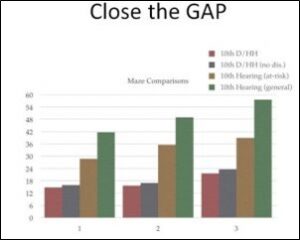 a common form of curriculum-based measurement. Maze presents sentences or short stories with every 7th word missing. The student must select which of 3 words best fits the missing word in the sentence. Clearly, as can be seen in the bar graph, even our students with hearing loss who do not have IEP services and supports are not performing like their age peers. Learn more about creating MAZE reading passages here.
a common form of curriculum-based measurement. Maze presents sentences or short stories with every 7th word missing. The student must select which of 3 words best fits the missing word in the sentence. Clearly, as can be seen in the bar graph, even our students with hearing loss who do not have IEP services and supports are not performing like their age peers. Learn more about creating MAZE reading passages here.
Monitoring Progress of Expanded Core Skills
Expanded core curriculum refers to those skills that students with hearing loss need to learn to be able to access the general education curriculum and fully participate. Even if a student is provided access to effective communication as required by Title II of the ADA, he or she still needs to learn the skills to independently, and confidently, navigate as a person with hearing loss in a mainstream setting. These areas will not be taught specifically and yet they must be learned if full participation in the classroom is expected.
Per the Iowa Expanded Core Curriculum guidance, hearing loss adds a dimension to learning that requires explicit teaching, such as information gained through incidental learning. It has been estimated that for persons without hearing loss, 80% of information learned is acquired incidentally. No effort is required. Any type of hearing loss interrupts this automatic path to gain information. This incidental information must be delivered directly to students who are deaf or hard of hearing. Two hierarchies for self-advocacy are the Guide to Self-Advocacy Skill Development and the Student Expectations for Advocacy and Monitoring (SEAM).
Most teachers without specialized training related to hearing loss do not have the expertise to address the unique needs of students who are deaf or hard of hearing. Therefore, IFSP & IEP team collaboration with educational audiologists and teachers of students who are deaf or hard of hearing is necessary in addressing academic and social instruction and the assessment of these areas. In order to close this information gap, the Expanded Core Curriculum for Students who are Deaf or Hard of Hearing (ECC-DHH) was developed. Texas has developed a Livebinder with extensive information about ECC and resources to support implementation.
Collect and use data in planning for next year’s student success!
References:
- 1. Fisher, Frey, Hattie (2016) Visible Learning for Literacy Grades K-12: Implementing the Practices that Work Best to Accelerate Student Learning. Corwin/SAGE, Thousand Oaks, California
- 2. Yoshinaga-Itano (2010). The longitudinal language learning of infants and children with hearing loss. ASHA Virtual EHDI Conference, October.
- 3. Meyer, Kym (8/17/2017). Wait – There’s a Student with Hearing Loss Coming into My Class? Webinar viewable at https://www.youtube.com/watch?v=r3ytOawiYuI&feature=youtu.be
- 4. Duncan (2001). Conversational skills of children with hearing loss and children with normal hearing in an integrated setting. The Volta Review, 101(4), 193-211.
- 5. Caissie (2002). Conversational topic shifting and its effect on communication breakdowns for individuals with hearing loss. The Volta Review, 102(2), 45-56

